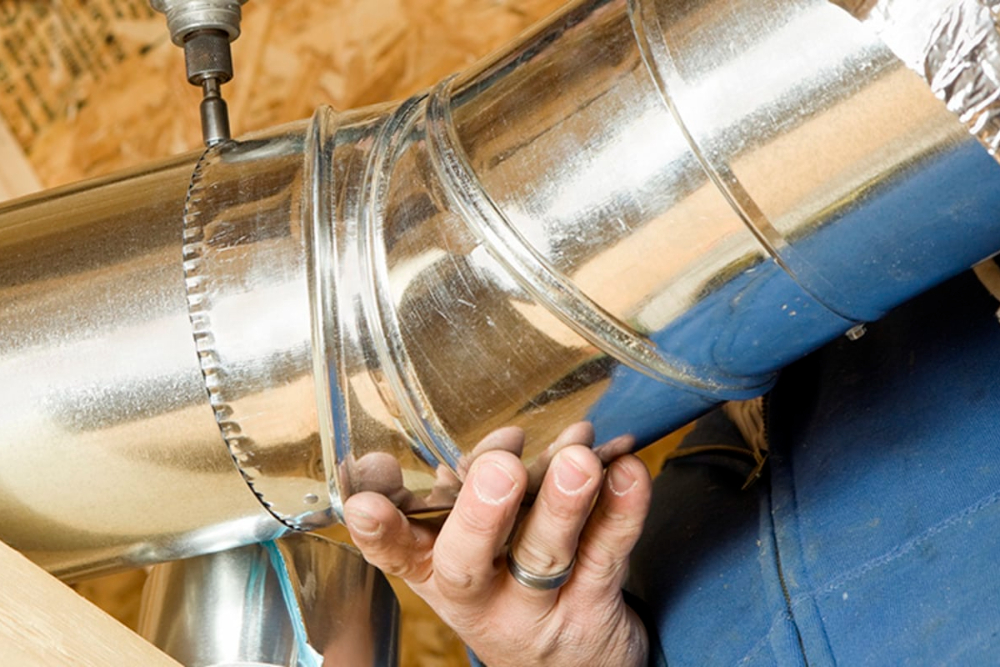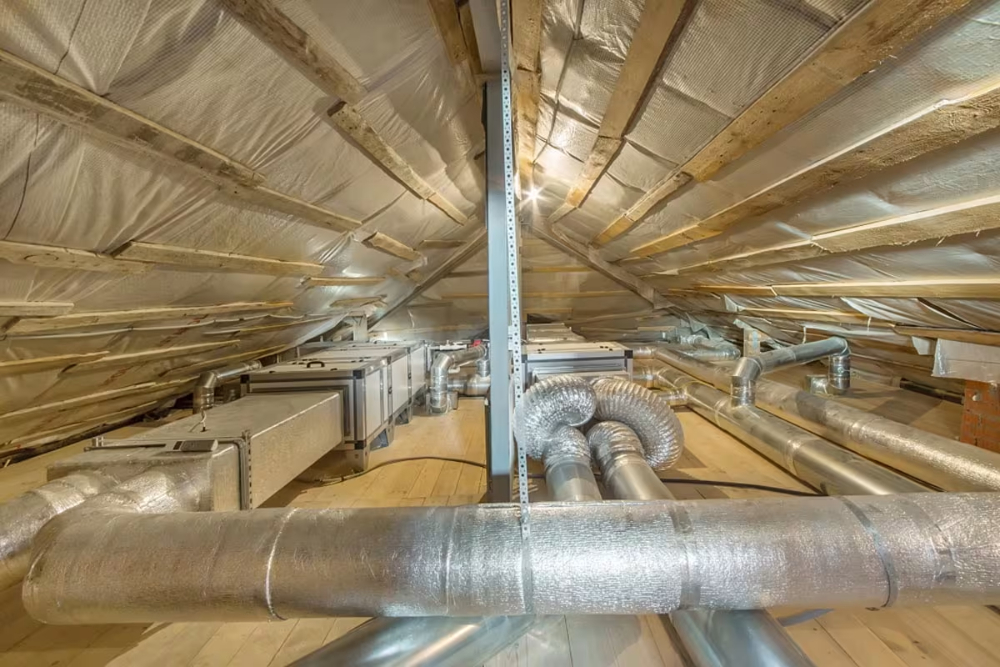Duct Repair And Replacement
Duct Work Services
Service Air Conditioning specializes in air duct repair and replacement of all types, including flex, fiberglass, and metal air ducts. We will not only fix the obvious problem, but we will also check the entire system and make sure you stay cool and comfortable for years to come! When you are looking for air duct repair or replacement in Broward, Palm Beach, Martin, & St. Lucie Counties.
We prioritize quality workmanship, transparent pricing, and your complete satisfaction!
Benefits and Efficiency of Duct Work Replacement & Repair
How does proper ductwork improve energy efficiency?
Well-designed and maintained ductwork improves energy efficiency by:
- Reducing air leakage (which can waste up to 30% of energy)
- Ensuring proper airflow distribution throughout the home
- Minimizing temperature loss during air distribution
- Reducing the runtime of heating and cooling equipment
- Preventing the HVAC system from working harder than necessary
- Properly sized ducts that match system requirements
What are the benefits of upgrading old ductwork?
Upgrading old ductwork provides several benefits:
- Increased energy efficiency and lower utility bills
- Improved indoor air quality and reduced allergens
- Better temperature control and elimination of hot/cold spots
- Reduced noise from air movement
- Support for more efficient modern HVAC equipment
- Potential increase in home value
- Enhanced system longevity
Frequently Asked Questions
General Questions
What are HVAC ducts and what do they do?
HVAC ducts are passages or conduits that distribute conditioned air (heated, cooled, or ventilated) throughout your home or building. They’re an essential component of your HVAC system, carrying air from your heating and cooling equipment to different rooms and areas, ensuring consistent temperature and air quality throughout the space.
What materials are commonly used for ductwork?
Common ductwork materials include…
- Sheet metal (galvanized steel or aluminum): Durable and non-porous
- Fiberglass duct board: Provides insulation and noise reduction
- Flexible ducts: Insulated tubes for irregular spaces and connections
- Fiberboard: Compressed fibers bonded with resin and faced with foil
- PVC: Used primarily for underground ductwork applications
How long should quality ductwork last?
With proper installation and maintenance, ductwork typically lasts 15-25 years. Factors affecting lifespan include:
- Quality of materials and installation
- Environmental conditions (humidity, temperature extremes)
- Maintenance frequency
- Usage patterns
- Local environmental factors (coastal salt air, industrial areas)
Installation
How is new ductwork installed?
The ductwork installation process typically includes…
- System design and load calculations
- Creation of a duct layout plan
- Measuring and fabricating ducts
- Installing main supply and return trunks
- Running branch ducts to individual rooms
- Installing registers, grilles, and vents
- Sealing all connections and joints
- Insulating ducts as needed
- Testing and balancing the system
How long does ductwork installation take?
For an average home (approximately 2,000 sq ft)…
- Complete new ductwork system: 2-4 days
- Partial replacement: 1-2 days
- Minor repairs: Usually completed within a day
Installation time varies based on…
- Size and complexity of the system
- Accessibility of installation areas
- Number of technicians on the job
- Whether old ductwork needs to be removed
Can ductwork be installed in older homes?
Yes, ductwork can be installed in older homes, though it presents unique challenges…
- Space constraints in walls, ceilings, and floors
- Preservation of architectural features
- Potential asbestos or lead paint concerns
- Integration with existing systems
Solutions often include…
- High-velocity, small-diameter duct systems
- Creative routing through closets or existing chases
- Exposed spiral ductwork as an architectural feature
- Zoned mini-split systems as an alternative
Repair & Maintenance
What are common ductwork problems?
Common ductwork issues include…
- Leaky ducts causing energy loss (up to 30% of conditioned air)
- Inadequate insulation leading to energy waste
- Improper sizing resulting in airflow problems
- Disconnected or collapsed ducts
- Contamination with dust, mold, or pests
- Excessive noise from improper design or installation
- Condensation issues leading to water damage
How do I know if my ductwork needs repair?
Signs that indicate your ductwork needs repair include…
- Rooms that are consistently too hot or too cold
- Significantly higher energy bills
- Excessive dust in your home, especially near vents
- Whistling or rattling noises from ducts when system runs
- Visible damage, sagging, or disconnected ducts
- Musty odors when the system operates
- Poor airflow from registers
What is duct sealing and why is it important?
Duct sealing involves closing gaps, cracks, and connections in ductwork using specialized materials such as mastic sealant, metal-backed tape, or aerosol sealants. It’s important because:
- It prevents up to 30% energy loss through leaky ducts
- Improves indoor air quality by preventing contaminants from entering
- Enhances system performance and efficiency
- Increases home comfort by ensuring proper airflow
- Reduces strain on HVAC equipment, extending its lifespan
How often should ductwork be inspected?
Ductwork should be professionally inspected…
- Every 3-5 years for routine maintenance
- After home renovations or HVAC system changes
- Following water damage or pest infestations
- When purchasing a new home
- If you notice performance issues with your HVAC system
Cost Considerations
How much does new ductwork installation cost?
New ductwork installation costs typically range from $1,500 to $7,000 for an average home, with factors affecting price including…
- Home size and layout complexity
- Ductwork material (metal, fiberglass, flexible)
- Accessibility of installation areas
- Local labor rates
- Permit requirements
- Need for specialized designs or components
- Whether existing ductwork needs removal
What factors affect ductwork repair costs?
Ductwork repair costs vary based on…
- Extent and location of damage
- Accessibility of the affected areas
- Type of repair needed (sealing, replacement, reconnection)
- Materials required
- Local labor rates
- Whether repairs require specialized equipment
- Time required to complete the work
Is ductwork installation/repair covered by insurance?
Insurance coverage for ductwork varies…
- Homeowners insurance typically covers damage from covered perils (fire, falling objects, certain water damage)
- Normal wear and tear or age-related deterioration is generally not covered
- Home warranties may cover some ductwork repairs if the system was in good condition when the warranty began
- New construction warranties might cover defects in installation
Always check your specific policy for details on coverage.


